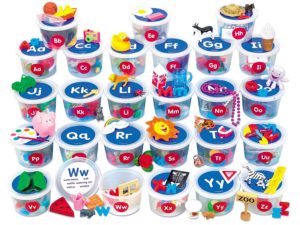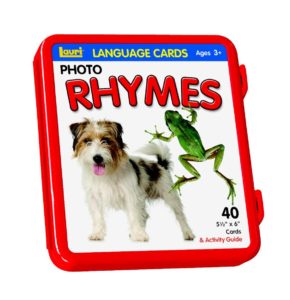How do you teach rhyming to your pre-schooler? Rhyming is an important pre-literacy skill and is part of the foundation that future reading skills are built on. But, teaching rhyming doesn’t have to be complicated!
My favorite ways to work on rhyming is to enjoy lots and lots of rhyming songs and stories together! Oral language activities and games are the best ways to learn rhyming because they’re a natural part of the way children process language.
Once the children have had plenty of experience hearing rhyming words in songs and stories, and I know that they’ve developed an ear for it, I introduce them to some hands on activities such as sorting and matching rhyming pictures and objects.
I created this rhyming printable to go with our Christmas and December holiday themes.

A printable like this is suitable for children who have already been introduced to the concept of rhyming and can identify rhymes in songs and stories.
This rhyming printable is great as an individual activity or a group activity. To play:
- Line up the Christmas tree mats and name the picture on the ornament.
- Place the ornament cards in a stack.
- Pick up an ornament card and name the picture.
- Look for the rhyming Christmas tree mat and place the ornament card on it.
I have used mostly easy CVC words for these cards so that the rhymes are simple. This printable includes 4 rhyming pairs for each short vowel.
Other ways to use these cards:
- If you have spellers in your class, use the ornament cards with magnetic letters or a movable alphabet to spell the CVC words
- Print two copies of the ornament cards to make a simple matching activity
- Sort the ornament cards by middle vowel
- Use magnetic letters to identify the initial sounds on the Christmas tree mats
Related Products
Click the images for details. (Affiliate links are included in this post. See full disclosures here.)
My Recommendations on Amazon
Click the images for details. (Affiliate links are included in this post. See full disclosures here.)










